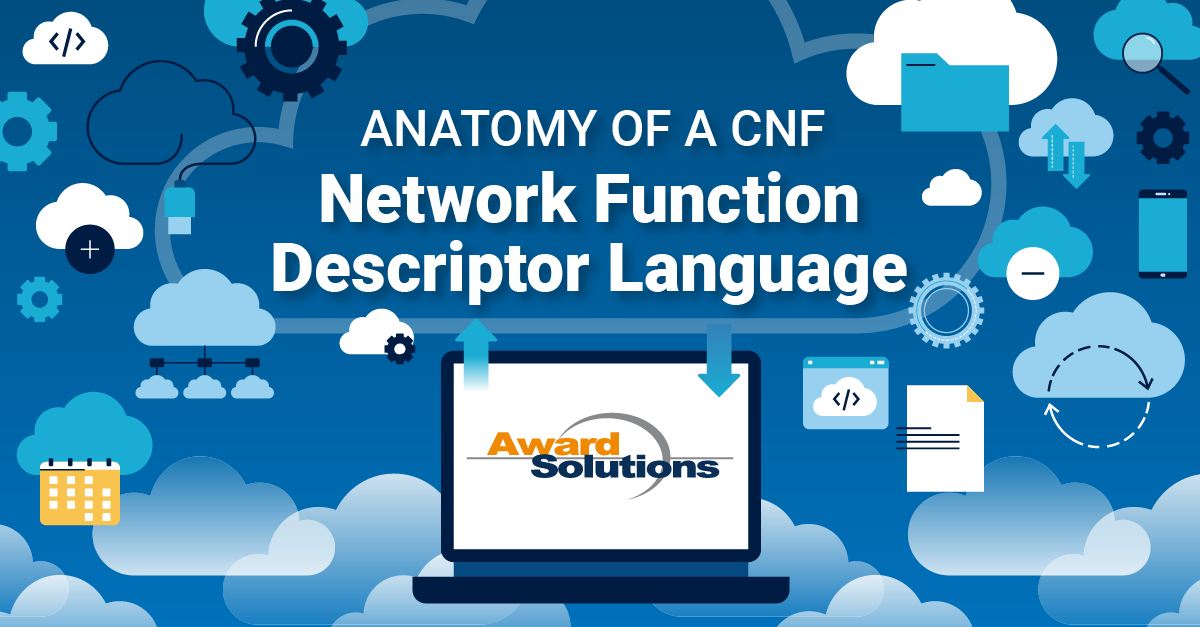
The dominant way to deploy traditional telecommunications functions is CNFs. In Anatomy of a CNF – Part 1 and Part 2 of the series, we discuss the term CNF and the container image, a vital subcomponent of a CNF. Part 3 of Anatomy of a CNF focuses on container image storage, and we discuss supporting resources in Part 4 of the CNF series. Finally, Part 5 showed how Helm and Help Charts enable the setup and deployment of considerable resources, and the Network Function Descriptor packaged in a CSAR file was discussed in Part 6 of Anatomy of a CNF.
The last question in our series is, “What is the language of the Network Function Descriptor?” As the Network Function Virtualization (NFV) industry evolves, it's important to standardize the description of the components that make up a virtual network. Enter TOSCA and YAML.
Topology and Orchestration Specification for Cloud Applications (TOSCA) is a standard language describing the components and relationships of an application in a cloud environment. TOSCA allows you to define a virtual network's topology, components, and dependencies while enabling you to orchestrate the deployment of these components and lifecycle management.
"YAML Ain't Markup Language" (YAML) is a human-readable data serialization language used for configuration files. YAML is easy to read and write, making it a popular choice for defining network functions and requirements.
TOSCA and YAML provide a powerful toolset for describing and deploying network functions in an NFV environment. TOSCA provides standardization for network topology, stored in a YAML file, which is easy to read and write.
Think of TOSCA as a language, and YAML like the alphabet accompanying the language. For the most part, English and Spanish use the same alphabet. However, knowing English doesn’t mean you know Spanish. A similar alphabet does not indicate the same language. TOSCA is one of many “languages.” Others like TOSCA include HEAT in OpenStack and the manifest files in Kubernetes using YAML as their “alphabet.”
After defining the network topology, TOSCA defines the network functions running on the virtual network, including the requirements and dependencies of each network function, for example, defining the amount of CPU and memory resources required by a network function or any software dependencies.
TOSCA also provides a way to define service templates, a reusable blueprint for deploying virtual networks. Service templates allow you to define a standard set of components and configurations for a type of virtual network, making it easy to deploy multiple instances of the same network.
TOSCA and YAML provide a powerful toolset for describing and deploying virtual networks in an NFV environment and a standard way of defining the network topology, network functions, and orchestration for easy lifecycle management of virtual networks.
In summary of the Anatomy of a CNF series, a CNF is a container-based network function deployed into a Kubernetes cluster using Helm Charts to define all resources while using a Network Function Descriptor written in TOSCA employing YAML to define the requirements of the function. While a bit of a mouthful, the summary includes the critical parts needed to define and deploy a CNF.
Chris Reece, Technologist, Award Solutions, Inc.
Chris Reece works with leading global service providers, transforming networks and empowering individuals in 5G, Virtualization/Containerization, and Machine Learning/Artificial Intelligence. Service providers rely on Chris to paint both the big picture and the business impact of technology and appreciate his enthusiasm for getting into deep, detailed discussions when needed. You may have seen Chris on Award Solutions' YouTube Channel. In addition, Chris is featured at leading telecom conferences worldwide, including MWC, and in publications like IEEE Spectrum and DZONE.
Chris holds a master's degree in Computer Science Telecommunications from the University of Missouri at Kansas City and a bachelor's degree in Computer Science and Mathematics from Cameron University. He also holds four patents in wireless technologies.
